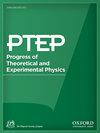Broad-Band X-Ray Analysis of NGC 3227
IF 8.3
4区 物理与天体物理
Q1 Physics and Astronomy
引用次数: 0
Abstract
Previously in Project (A) we carried out analysis of the data obtained by observations of the 1.5 Seyfert galaxy NGC 3227, the two observations performed by XMM-Newton in 2000 and 2006 and six observations by Suzaku in 2008. In the current paper, Project (B), our work was extended to joint XMM-Newton and NuSTAR observations in 2016 as well as a NuSTAR observation in 2017. In Project A a unified model was constructed. The model consists of a hard power law (ΓHard = 1.4 − 1.7) which is interpreted as the Comptonized emission from the corona above an accretion disk. In the high flux states an additional soft excess component dominates, which is consistent with either a power law (ΓSoft = 3.3 − 3.85) or warm Comptonization. These emissions are absorbed by a partial covering material and warm absorbers. A reflection component and several emission lines are also present. In Project B, the model presented in Project A was applied to more recent observations. It was found that this model remains valid. Our conclusion is that this model is consistent, valid with the long observations from 2000 to 2017 and over the broad frequency band from 0.3 keV to 50 keV.NGC 3227 的宽波段 X 射线分析
在之前的项目(A)中,我们分析了对1.5塞弗特星系NGC 3227的观测数据,包括XMM-牛顿在2000年和2006年进行的两次观测,以及Suzaku在2008年进行的六次观测。在本文,即项目(B)中,我们的工作扩展到了2016年的XMM-牛顿和NuSTAR联合观测,以及2017年的NuSTAR观测。在项目 A 中,我们构建了一个统一的模型。该模型包括一个硬幂律(ΓHard = 1.4 - 1.7),被解释为来自吸积盘上方日冕的康普顿化发射。在高通量状态下,额外的软过量成分占主导地位,这与幂律(ΓSoft = 3.3 - 3.85)或暖康普顿化一致。这些发射被部分覆盖材料和暖吸收体吸收。此外,还存在反射成分和几条发射线。在项目 B 中,项目 A 中提出的模型被应用于最近的观测。结果发现,该模型仍然有效。我们的结论是,该模型与 2000 年至 2017 年的长期观测结果是一致的,在 0.3 keV 至 50 keV 的宽频带内也是有效的。
本文章由计算机程序翻译,如有差异,请以英文原文为准。
求助全文
约1分钟内获得全文
求助全文
来源期刊

Progress of Theoretical and Experimental Physics
PHYSICS, MULTIDISCIPLINARY-PHYSICS, PARTICLES & FIELDS
CiteScore
12.00
自引率
5.70%
发文量
148
审稿时长
17 weeks
期刊介绍:
Progress of Theoretical and Experimental Physics (PTEP) is an international journal that publishes articles on theoretical and experimental physics. PTEP is a fully open access, online-only journal published by the Physical Society of Japan.
PTEP is the successor to Progress of Theoretical Physics (PTP), which terminated in December 2012 and merged into PTEP in January 2013.
PTP was founded in 1946 by Hideki Yukawa, the first Japanese Nobel Laureate. PTEP, the successor journal to PTP, has a broader scope than that of PTP covering both theoretical and experimental physics.
PTEP mainly covers areas including particles and fields, nuclear physics, astrophysics and cosmology, beam physics and instrumentation, and general and mathematical physics.
 求助内容:
求助内容: 应助结果提醒方式:
应助结果提醒方式:


